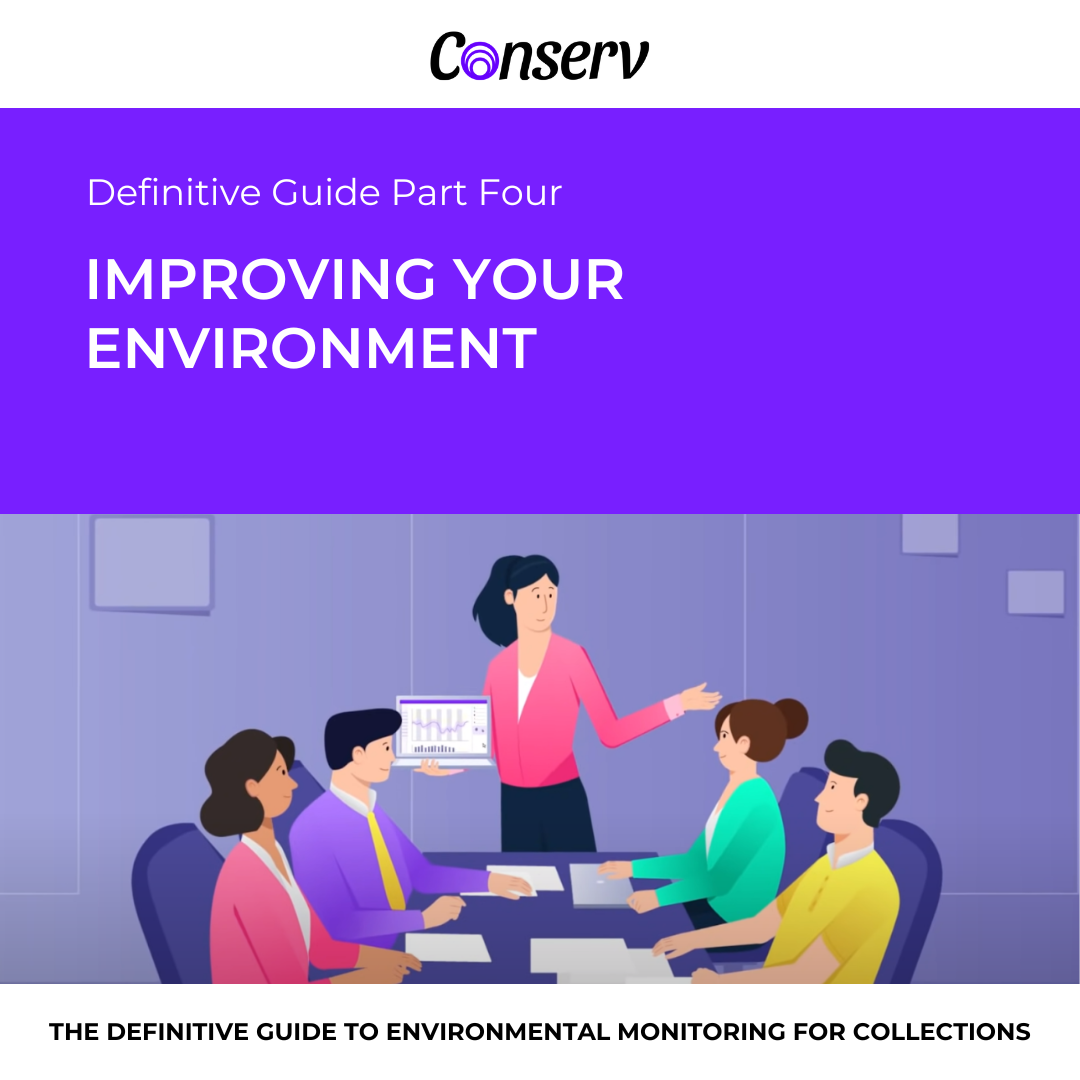You are a collections care expert. You are well-trained, and possibly even have many years of experience in this unusual field. Your organization relies on you to provide top quality care for your unique and irreplaceable collection. But who do you rely on for help with the myriad challenges presented by your building’s environment?
While no guide can address every possible scenario, these blog posts are intended to provide a solid foundation upon which to build your understanding of controlling your collections environment.
A basic understanding of thermodynamics, mechanical engineering, and even human leadership structures can be gained from these readings.
Working within a team
In The Team Approach, I examine the One Team approach to creating the best possible environment in which your collections can thrive. As a museum professional turned facilities manager, I’ve been fortunate to be able to experience both the passion that drives collections care and also the engineering challenges that face the facilities technicians. I explore ways to build bridges in order to create an alliance around the common interest of maintaining optimal conditions within a building.
The secret to successfully working with your facilities engineers and institutional leadership is really no secret at all. If you ask the right questions and strive to learn what it is that drives the facilities and leadership teams, you will eventually be able to find a place where everyone’s interests intersect. Spoiler alert: the more you can make these allies feel like you understand the struggles and limitations of their work, the more you will find that they become empathetic to you and your mission.
Improving your environment
Christopher Cameron dives into the physics and thermodynamics that make up the relationship between humidity, temperature, and dew point in Environmental Control for Collections. While those concepts are easily understood on their own, the dynamic interactions between the three are less intuitive. Christopher describes the trinity of temperature, humidity, and dew point in a way that is comprehensive yet easy to understand.
As you make your way through this article, you will gain understanding of how to use set points, setbacks, and other strategies to create an environment that is not only kind to your collections, but also may aid in energy savings as well. This will not be a surprise to anyone, but the key to making all of this work is strong data collection practices.
Establishing a trend of temperature and humidity within your spaces for at least a year, and comparing it to seasonal outdoor conditions, is a very useful way to pinpoint opportunities for energy savings. If you can gather data for several years, you may even be able to find subtle clues that your mechanical system is showing vulnerabilities or is struggling to keep up with demand.
Financing your environmental monitoring program
In her article on grants and funding, Maddie Cooper teaches us about the most daunting system that any of us have to deal with; finances.
Machines are complex and thermodynamics is mystifying, but the system that controls the money can be downright terrifying.
But do not fear, Maddie will guide you through the process of securing funding for your environmental monitoring program or HVAC upgrades.
Maddie’s useful tips will help you guide your institutional leadership to understand that funding these improvements should be seen as an investment that pays dividends rather than simply burns money. A properly planned upgrade can:
- increase sustainability by providing energy savings,
- increase asset protection (your collection IS an asset even though sometimes institutional leadership sees it as a liability or even a nuisance),
- reduce expensive maintenance and emergency repair costs.
You didn’t get into collections care to become an expert on mechanical engineering, physics, or finances. In fact, maybe you even went into collections care to avoid having to deal with any of these concepts.
Hopefully this series de-mystifies many of the terms and concepts that you will need to know to work with your organization, improve the environment within your built spaces, and make a business case for funding improvements. You became a collections care expert because you are passionate about preserving our history as it is shared through art, writing, and all forms of creativity, and our hope is that this guide will aid you in your quest.
If you have any questions about environmental monitoring, integrated pest management, or just want to talk about preventative conservation, please reach out to us! Don’t forget to check out our blog or join our community of collections care professionals where you can discuss hot topics, connect with your peers or even take a course to get familiar with the Conserv platform.





